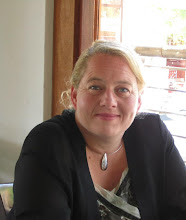Here's what AIR have to say about it:
"This outdated law imposed limitations on commercial negotiations and didn't take into account any potential changes to the Australian radio landscape in the future, so much has changed since then. The 1% cap is a law that is outdated, a law that in effect provides a subsidy to a billion dollar media industry at the expense of record labels and musicians...
At the time that the 1% cap was introduced, no-one envisaged the phenomenal growth of commercial radio in Australia. In fact, last year the industry which had grown to include 273 commercial radio stations Australia-wide reported combined revenues of more than a billion dollars over the 2010 calendar year. It is estimated that 70% of that money comes from the FM sector. Commercial radio is an industry that leverages huge sums of money from advertisers due to combined audiences of more than 9 million people...
None of the powerful Australian commercial FM networks could survive by providing a diet of talk and advertisements without music. A billion dollar industry built on the back of musical content now only pays approximately $4 million dollars a year for the music that they play. Normally rates paid by users of music (or for that matter, any copyrighted material) are negotiated between the record labels and the users, if they can't reach agreement the issue will go to the Copyright Tribunal for an independent hearing. The only exception to this process is the broadcast licence fee paid by radio stations for use of sound recordings, where the cap hinders labels by providing a ceiling to all negotiations which favours the users...
The whole situation means that owners of master copyrights are only getting paid one tenth the amount that APRA registered songwriters and publishers are receiving for the same material..."
I have already suggested that the rate at which royalties need to be paid for the use of recordings on terrestrial radio is the sticking point for me in the United States negotiations and yet there the National Association of Broadcasters are also looking for a 1% cap.
Given the free advertisement that radio provides to artists and the fact that it is a symbiotic relationship with each depending heavily on the other I believe there should be a cap on the rate that royalty payments are set. These arguments do little to highlight the fact that the revenues of the commercial radio stations have increased over time as has the overall population of the country. Furthermore, the ABC and community radio stations, should be left out of the discussion altogether as they provide a community service rather than profit commercially from the endeavors. Songwriters and publishers have far fewer revenue streams and should be treated differently - copyright holders can make money in other areas and should not be greedy.
The case will be heard on the 10th May 2011 so stay tuned for further developments.
Further Reading
AIR Independent Music Blog, The 1% Cap (April 2011) < http://ausindies.com.au/ > at 28 April 2011


No comments:
Post a Comment